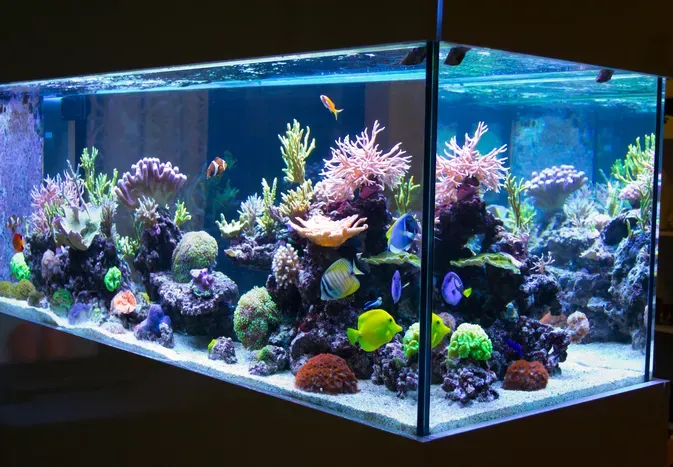Aquarium Lighting Basics: the Case for LED Fixtures
Updated on 04/26/24

Aquarium Lighting Basics: The Case for LED Fixtures
Introduction
Proper illumination is essential for the health and well-being of your aquarium's inhabitants. Whether you're a seasoned hobbyist or a novice aquarist, understanding aquarium lighting basics is crucial for creating a thriving underwater ecosystem. This comprehensive guide will delve into the advantages of LED (light-emitting diode) fixtures and explain why they're the superior choice for modern aquariums.
The Benefits of LED Fixtures
Compared to traditional lighting systems, LED fixtures offer a multitude of benefits, including:
* Energy Efficiency: LEDs consume significantly less energy than fluorescent or incandescent bulbs, reducing your electricity bills and contributing to environmental sustainability.
* Longer Lifespan: LED fixtures typically last for 50,000 hours or more, providing years of uninterrupted illumination without the need for frequent bulb replacements.
* Color Customization: LED fixtures enable you to adjust the light spectrum and color temperature to suit the specific needs of your aquarium's inhabitants.
* Penetration and Intensity: LEDs emit high-intensity light that can penetrate deeper into the water column, providing optimal lighting conditions for deep-water species and plants.
Types of LED Fixtures
There are two main types of LED fixtures used in aquariums:
* Retrofit Fixtures: These fixtures are designed to replace traditional fluorescent or incandescent bulbs, offering an easy upgrade without the need for major modifications.
* Panel Fixtures: Panel fixtures are more comprehensive lighting systems that provide full coverage and optimal illumination for larger aquariums.
Choosing the Right LED Fixture
When selecting an LED fixture, consider the following factors:
* Tank Size: The size of your aquarium will determine the wattage and coverage required for adequate lighting.
* Light Spectrum: Different aquatic species have specific light requirements. Choose a fixture that provides the appropriate spectrum for your inhabitants.
* Intensity: Consider the depth of your aquarium and the light-loving nature of your plants and animals.
Examples of LED Fixtures in Action
* Low-Light Plants: Plant species like Anubias and Cryptocoryne thrive under low-light conditions. LED fixtures with a warm spectrum (2,700-3,000 Kelvin) provide optimal growth.
* High-Light Plants: For demanding plants like Red Tiger Lotus and Vallisneria, high-intensity LED fixtures with a full-spectrum (4,000-6,500 Kelvin) or red-dominant spectrum are essential.
* Coral Reefs: Marine aquariums require specialized LED fixtures that mimic the natural sunlight intensity and spectrum found in coral reefs. These fixtures promote coral growth and color enhancement.
* Tropical Fish: Active fish species like Tetras and Bettas prefer bright, well-lit environments. Choose LED fixtures with a neutral-white spectrum (4,000-5,000 Kelvin) for vibrant coloration and overall well-being.
Conclusion
LED fixtures represent the most advanced and effective lighting solution for modern aquariums. Their energy efficiency, longevity, customization options, and superior performance make them the ideal choice for discerning aquarists seeking to create a thriving underwater ecosystem. By understanding the benefits and applications of LED lighting, you can provide your aquatic inhabitants with the optimal conditions for growth, health, and beauty.
Explore More Pets

Freshwater Aquarium Filters
How to Deal With Cloudy Aquarium Water

Saltwater Aquarium Filters
How Do You Remove Chloramines From Tap Water?

Freshwater Aquariums & Habitat
Can I Keep My Koi Fish Inside?

Saltwater Aquariums & Habitat
14 Best Floating Plants for Your Aquarium

Freshwater Fish Health
How to Treat Ich on Freshwater Fish

Saltwater Fish Health
Fin Rot in Aquarium Fish

Freshwater Aquarium Filters
How to Do Aquarium Water Changes

Saltwater Fish Health
How Do Fish Get Parasites?